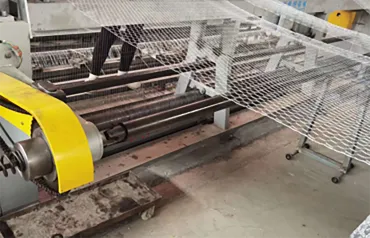Nov . 08, 2024 22:39 Back to list
Choosing the Right Nails for Your Metal Roofing Project
Understanding Metal Roofing Nails Essential Components for a Durable Roof
When it comes to roofing, selecting the right materials is crucial for ensuring the durability and longevity of your structure. One often overlooked aspect of roofing installation is the type of nails used. Specifically, metal roofing nails play a pivotal role in securing metal roofs, which are gaining popularity due to their longevity, energy efficiency, and modern aesthetic. This article delves into the importance of metal roofing nails, the factors to consider when choosing them, and the different types available.
Why Metal Roofing Nails Matter
Metal roofs can withstand extreme weather conditions, resist corrosion, and have a long lifespan. However, to maximize these benefits, it's imperative to use the right nails. Metal roofing nails are specifically designed to enhance the performance of metal roofing systems. Unlike traditional wood screws or roofing nails, metal roofing nails are made with materials that prevent rust and corrosion, ensuring a secure fit even in harsh environments.
Using the right nails not only helps maintain structural integrity but also prevents leaks
. Inadequate fastening can lead to issues such as water infiltration, which can result in mold growth, water damage, and other costly repairs. Therefore, investing in high-quality metal roofing nails is not just a choice; it’s a necessity.Factors to Consider When Choosing Metal Roofing Nails
1. Material The most common materials for metal roofing nails are aluminum and galvanized steel. Aluminum nails are lightweight and resistant to rust, making them suitable for coastal areas where saltwater exposure is a concern. Galvanized steel nails, on the other hand, offer superior strength and corrosion resistance for various applications. Choose the material based on your specific environmental conditions.
2. Length The length of the nail is crucial. It must be sufficient to penetrate the roofing material and secure it to the underlying structure. Typically, metal roofing nails range from 1 inch to 1.5 inches in length. For thicker metal panels, longer nails may be necessary. Always consult the manufacturer’s guidelines for specific recommendations.
3. Diameter The diameter of the nail head is also important. A larger diameter helps disperse the load, reducing the risk of tearing the metal roofing material under stress. Look for nails with a head diameter of at least 3/8 inch for optimal performance.
metal roofing nails

4. Type of Fastener There are different types of fasteners for metal roofs, including ring-shank, smooth-shank, and screw-type nails. Ring-shank nails offer the best holding power due to their ridged surface, while screw-type nails provide excellent grip and prevent backout over time. Each type has its advantages, so consider the specific requirements of your metal roofing system.
Installation Tips for Metal Roofing Nails
Proper installation of metal roofing nails is vital for achieving a leak-proof roof. Here are some tips to ensure effective installation
- Nailing Patterns Follow the recommended nailing pattern provided by the manufacturer. In general, nails should be placed at the top of the rib and along the seams to prevent wind uplift and ensure proper sealing.
- Avoid Over-Tightening While it can be tempting to drive nails in tightly, over-tightening can cause damage to the metal panels. This could lead to warping or cracking, compromising the strength of the roof.
- Check Local Building Codes Always ensure that your installation complies with local building codes and regulations, which may dictate specific requirements for fasteners used in metal roofing applications.
Conclusion
Metal roofing nails are not just a small detail in the roofing process; they are essential components that contribute significantly to the performance and longevity of a metal roof. By choosing the right materials, sizes, and types, you can ensure that your roofing system remains secure and effective against the elements. Whether you are a contractor, a homeowner, or a DIY enthusiast, understanding the importance of these critical fasteners can save you time, money, and headaches down the road.
-
The Role of Field Wire Fence in Grassland Conservation
NewsJul.15,2025
-
Stainless Steel Razor Wire Durability in Coastal Environments
NewsJul.15,2025
-
Enhancing Home Security with Mesh Fences
NewsJul.15,2025
-
Diamond Mesh Wire for Small Animal Enclosures
NewsJul.15,2025
-
Common Wire Nail Tensile Strength Testing for Woodworking
NewsJul.15,2025
-
Barbed Wire Corrosion Resistance Galvanization Techniques
NewsJul.15,2025









